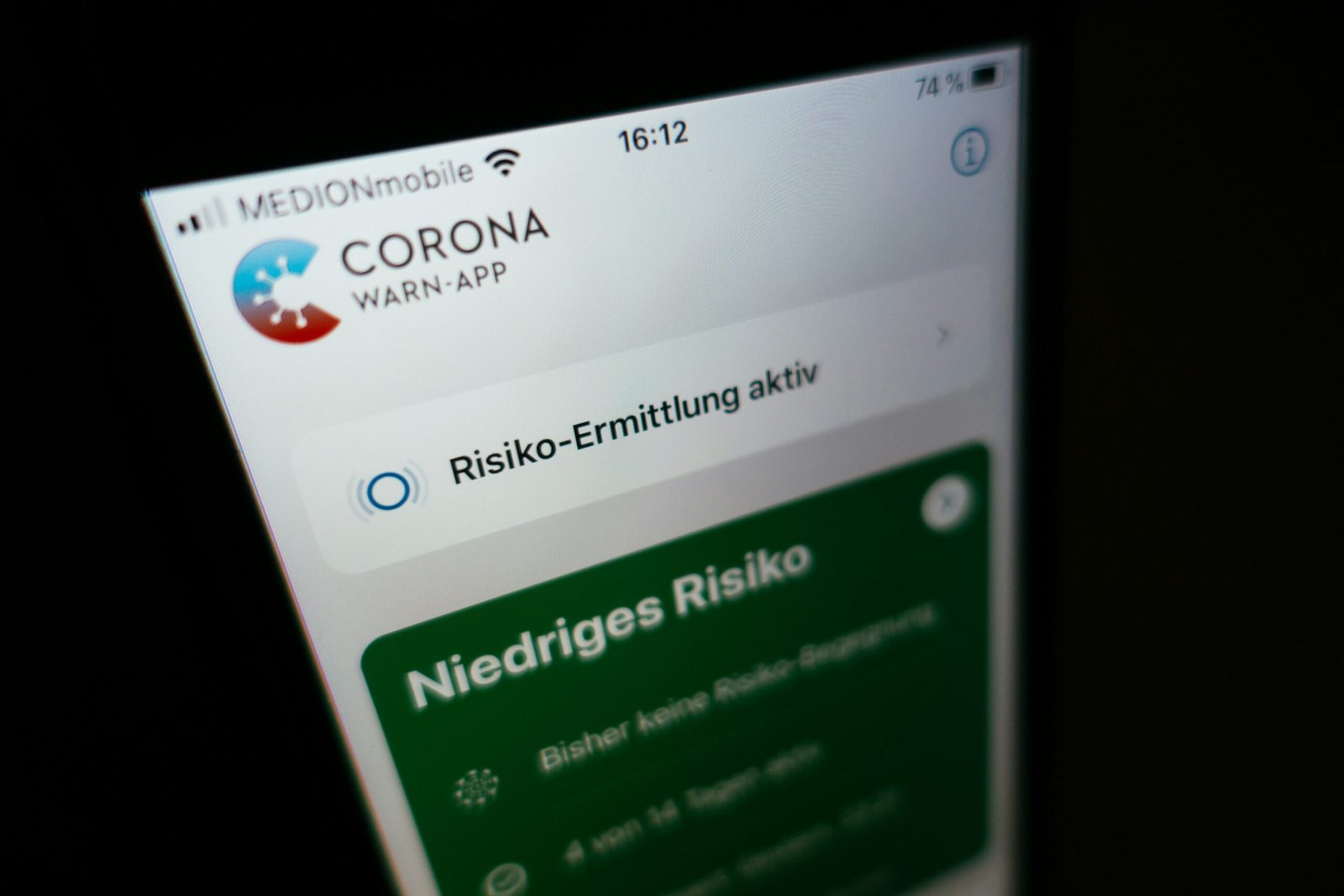How to Create a Personal Data Protection Plan: Step-by-Step Guide for Consumers
 Photo by Kai Pilger on Unsplash
Photo by Kai Pilger on Unsplash Introduction to Personal Data Protection
In today’s digital age, the significance of personal data protection cannot be overstated. As our reliance on digital platforms grows, so does our vulnerability to data breaches and cyber threats. At the heart of personal data protection is the securing of sensitive information that, if compromised, could lead to identity theft, financial loss, or other serious consequences.
Personal data encompasses a wide range of information. Financial details such as bank account numbers, credit card information, and transaction histories are critical and commonly sought by cybercriminals. Additionally, personal identifiers, including Social Security numbers, passport details, and driver’s license numbers, offer avenues for identity thieves to exploit. Even seemingly innocuous data like browsing history, email addresses, and contact lists can be pieced together to form a detailed profile of an individual, thereby putting their privacy at risk.
The urgency to protect personal data is further underscored by numerous high-profile data breaches. In recent years, breaches at companies such as Equifax, Target, and Facebook have exposed the sensitive information of millions of individuals. These incidents have demonstrated not only the potential for widespread harm but also the significant impact on consumer trust and organizational reputation.
As consumers, it’s imperative that we understand both the types of personal data that need protection and the measures we can take to safeguard them. Developing a comprehensive personal data protection plan is a proactive step that can help mitigate risks and ensure that our private information remains secure in an increasingly interconnected world.
Understanding Common Threats to Personal Data
Personal data protection has become a critical concern for consumers, as digital environments teem with threats that can compromise sensitive information. Among the prominent dangers are malware, phishing attacks, identity theft, and data breaches. Understanding these threats is essential for developing a robust personal data protection plan.
Malware, short for malicious software, infiltrates devices to steal data or cause harm. This can range from viruses that corrupt files to spyware that monitors user activity. A 2020 report by Cybersecurity Ventures noted that malware attacks cost the global economy roughly $6 trillion annually, underscoring the financial impact.
Phishing attacks involve tricking individuals into providing personal information by masquerading as trustworthy entities. These scams often come in the form of emails or messages that appear to be from reputable sources but are designed to steal sensitive data. The Anti-Phishing Working Group reported that phishing attacks increased by 46% in the first quarter of 2021, illustrating their growing prevalence.
Identity theft occurs when someone uses another individual’s personal information without permission, typically for financial gain. The U.S. Federal Trade Commission indicated that identity theft cases doubled from 2019 to 2020, with nearly 1.4 million reports filed. This spike highlights the significance of safeguarding personal data to prevent financial and reputational damage.
Data breaches, such as the infamous Equifax breach in 2017, expose vast amounts of personal information to cybercriminals. During this incident, sensitive data of 147 million individuals was compromised, illustrating the scale and severity of data breaches. A 2021 study by the Ponemon Institute revealed that the average cost of a data breach reached $4.24 million, impacting consumers’ trust and financial security.
By understanding these common threats, consumers can better appreciate the importance of a personal data protection plan. Awareness of how these threats operate and their potential repercussions can drive proactive measures to safeguard individual data effectively.
Conducting a Personal Data Audit
Understanding and protecting your personal data begins with a comprehensive personal data audit. This critical step involves identifying the various types of personal information you possess, determining where it is stored, and understanding how it is utilized. By conducting a thorough review of your digital footprint, you can effectively manage and safeguard your data.
First, gather all the personal data you can think of. This includes basic identification information such as your full name, address, phone number, and email addresses. Don’t forget financial data like bank account details, credit card numbers, and transaction histories. Sensitive information such as social security numbers, passwords, and health records should also be included in your audit.
Next, map out where this personal data is stored. Typical storage locations include your personal devices (such as smartphones, tablets, and computers), cloud storage services, and physical documents. Additionally, ensure to account for data stored on social media platforms, online accounts, and any third-party applications you use frequently.
Understanding how your personal data is used is vital. Scrutinize the purposes for which your information is processed. Determine if the data is being used for transactions, communications, subscriptions, or other activities. Pay particular attention to how third parties handle your data and what permissions you have granted them.
Documenting your findings is crucial to maintain clarity. Create a personal data inventory that outlines all the collected information, storage locations, and its respective uses. This inventory should be detailed yet manageable, ensuring you can refer back to it for regular updates.
Consider your digital footprint as an integral element of your online identity. Knowing what personal data is out there can help you better control its dissemination. This awareness is the foundation for implementing robust data protection measures and ensures you are well-prepared to mitigate potential privacy risks.
By conducting a personal data audit, you take the first step towards responsible data management and protection. This proactive approach not only safeguards your privacy but also empowers you with the knowledge to navigate the digital landscape securely.
Creating Strong Passwords and Using Password Managers
In the digital age, safeguarding personal data starts with creating strong, unique passwords for every account. The importance of robust passwords cannot be overstated as weak or repetitive passwords remain a primary entry point for unauthorized access. To construct a complex password, consider using a combination of lower and upper-case letters, numbers, and special characters. For instance, instead of using a predictable sequence like ‘Password123,’ opt for something more unpredictable such as ‘!Dav3$M4gic*2022’. Such complexity significantly boosts security against brute force attacks.
While creating distinctive passwords for each account is crucial, it can quickly become overwhelming to remember them all. This is where password managers come into play. These tools are designed to generate, retrieve, and keep track of complex passwords, ensuring that users can maintain high security standards without the cognitive load of memorizing multiple passwords.
Password managers operate by storing all your passwords in an encrypted database, which is accessible through a single master password. This means that you only need to remember one strong password to unlock access to all your other passwords. They also frequently include features such as form-filling for online forms, secure notes, and password strength evaluation. Some reliable password managers to consider are LastPass, Dashlane, and 1Password. Each of these tools provides a secure and user-friendly interface, offering cross-platform support so that your passwords are accessible whether you are on a computer, tablet, or mobile device.
Implementing a password manager not only enhances your personal data security but also streamlines your online experience by mitigating the risk of password fatigue and ensuring that every account is protected by a strong, unique password. This step is pivotal in creating a holistic personal data protection plan, effective against various forms of cyber threats.
Securing Personal Devices
In the modern digital age, safeguarding personal devices such as smartphones, tablets, and computers is paramount. These devices often store a wealth of sensitive information, making them prime targets for cyber-attacks. One of the foundational steps in securing these devices is the installation of reliable antivirus software. This software acts as a line of defense against malicious threats and unauthorized access. Additionally, enabling firewalls adds an extra layer of protection, blocking potential threats from entering the system.
Equally important is the practice of keeping systems and applications up-to-date. Manufacturers frequently release updates that patch security vulnerabilities. Regularly updating your operating system and applications ensures that you are protected against the latest threats. Another robust security measure is the implementation of multi-factor authentication (MFA). MFA requires users to provide two or more verification factors to gain access, enhancing the overall security of your device by reducing the risk of unauthorized access even if passwords are compromised.
When connecting to public Wi-Fi networks, the risk of data interception by malicious actors increases. To mitigate this risk, avoid accessing sensitive information or conducting financial transactions over public Wi-Fi. Utilizing a Virtual Private Network (VPN) can provide a secure connection by encrypting your internet traffic, making it difficult for cybercriminals to intercept and access your data. VPNs are particularly useful when you must use public networks, ensuring your data remains protected.
Additionally, adopting best practices such as setting strong, unique passwords for each account, and periodically changing them, can substantially bolster your device’s security. By following these measures, you can create a robust personal data protection plan, safeguarding your digital life against potential threats.
Managing Social Media Privacy Settings
Protecting personal data on social media platforms is essential in today’s digital age. Each platform provides distinct privacy settings that users should optimize to safeguard their information. This section provides step-by-step instructions for adjusting privacy settings on five popular platforms: Facebook, Twitter, Instagram, LinkedIn, and TikTok. It also underscores the importance of being cautious about what is shared online and with whom it is shared, along with recommendations for regularly reviewing and updating privacy settings.
To manage privacy settings on Facebook, navigate to the top right corner of your homepage and click on the downward arrow to access ‘Settings & Privacy.’ Select ‘Settings’ and open the ‘Privacy’ tab. Here, you can adjust who can see your future posts, phone number, and email address. Ensure that personal data is only visible to friends or specific groups you trust. Regularly review your ‘Activity Log’ to monitor your interactions and ensure that nothing compromising has been made public unintentionally.
On Twitter, click on your profile icon and go to ‘Settings and Privacy.’ In the ‘Privacy and Safety’ section, you can control who can tag you in photos, see your tweets, and send you direct messages. Activate ‘Protect your Tweets’ if you wish to make your tweets visible only to approved followers. It is advisable to review your settings periodically to maintain the desired level of privacy.
For Instagram, tap on your profile icon, then click on the three horizontal lines in the top right corner to access ‘Settings.’ From there, go to ‘Privacy’ to find options for adjusting who can see your posts, story, and profile information. Enable ‘Private Account’ to ensure only approved followers can view your content. Regular checks on your follower list will help in managing who has access to your personal data.
LinkedIn users should click on their profile picture at the top of the homepage, then select ‘Settings & Privacy.’ Under ‘Privacy,’ you can manage who can see your connections, profile updates, and personal information like email and phone number. Review ‘How others see your LinkedIn activity’ to limit public visibility of your interactions. Regularly updating these settings ensures better control over your professional and personal data.
TikTok
To manage TikTok privacy settings, go to your profile and tap on the three dots or lines in the top right corner to access ‘Privacy and Settings.’ In the ‘Privacy’ section, you can adjust who can follow you, send you messages, and see your liked videos. Setting your account to private allows only approved followers to view your content. Regular review of these settings helps in keeping your personal data secure.
Monitoring and Responding to Data Breaches
In today’s digitally connected environment, consumers need to be vigilant about data breaches to protect their personal information. Staying informed about potential breaches is crucial, and there are several strategies to monitor and respond effectively if your data is compromised.
Credit monitoring services play a significant role in this process. These services keep a continuous watch on your credit report and alert you to any suspicious activities, such as new accounts being opened in your name. Many of these services provide detailed reports, helping you understand the nature of the breach and its impact on your credit. It is advisable to enlist with a reputable credit monitoring service and set up real-time alerts for unusual activities.
Setting up alerts with your financial institutions is another key measure. Many banks and credit card companies offer alert services for various types of transactions. Configure these alerts to notify you of any high-value transactions, new account openings, or any changes in account details. This immediate notification system allows you to act promptly, minimizing potential damage.
If you suspect that your data has been compromised, there are several immediate steps you need to take. Begin by changing your passwords, ensuring that new passwords are strong and unique. Using a password manager can simplify this process. Next, contact your financial institutions to inform them of the breach; they can help monitor your accounts for fraudulent activities and take necessary protective measures.
Freezing your credit reports is another essential step. This prevents new accounts from being opened in your name without your consent. Contact all three major credit bureaus—Experian, Equifax, and TransUnion—to place a freeze on your credit. Additionally, regularly check your credit and bank statements for unauthorized transactions.
Remaining proactive and informed about data breaches is imperative. Keep abreast of news regarding major breaches and respond swiftly to any alerts you receive. By taking these preemptive steps, you ensure that your personal data is protected and can quickly counter any threats that emerge.
Maintaining Long-Term Data Protection Practices
Adopting long-term habits for personal data protection is essential for keeping your sensitive information secure. One of the fundamental practices is regularly updating your passwords. Choose strong, unique passwords for each of your accounts and change them periodically to reduce the risk of unauthorized access. Utilizing a password manager can assist in generating and storing complex passwords, ensuring you don’t reuse the same password across multiple sites.
Equally important is keeping your software and privacy settings up to date. Software developers frequently release updates that patch security vulnerabilities. Ensure that your operating system, applications, and antivirus software are configured to install updates automatically. Additionally, review and adjust your privacy settings on social media platforms, email accounts, and other online services to limit the amount of personal information you share.
Staying informed about new threats and protection strategies is crucial for maintaining robust personal data protection practices. Cybersecurity is a constantly evolving field, with new risks emerging regularly. Commit to ongoing education by following cybersecurity blogs, subscribing to newsletters, and enrolling in online courses. Resources such as the blogs from cybersecurity companies, government advisory websites, and dedicated online forums can help you stay ahead of potential threats.
Remember, data protection is an ongoing process that demands continuous vigilance. Regularly monitoring your accounts for unusual activity, being cautious with the information you share, and staying updated on the latest cybersecurity best practices are all necessary steps to safeguard your personal information. Adopting these habits will help you build a resilient personal data protection plan, ensuring your sensitive data remains secure long-term.



No Comments